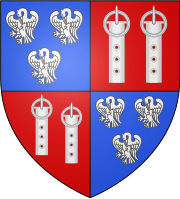First creation (1644)
The first formal creation of the earldom was in the Peerage of England in 1644, when Francis Leigh, 1st Baron Dunsmore was made Earl of Chichester (in the County of Sussex), with remainder to his son-in-law Thomas Wriothesley, 4th Earl of Southampton (the husband of his daughter Elizabeth). He had already been made a baronet, of Newnham, Warwickshire, in 1618 (in the Baronetage of England), [2] with remainder to the heirs male of his body, and Baron Dunsmore of Dunsmore, Warwickshire, in 1628 (in the Peerage of England), with special remainder to his stepson John Anderson (the son of his second wife Hon. Audrey Boteler and Sir Francis Anderson). [1]
Lord Chichester as predicted had no sons. On his death in 1653 his baronetcy became extinct, equally the barony of Dunsmore as his stepson Sir John (who was conferred a baronetcy in 1629) had died childless in 1630. The earldom passed to Lord Southampton (see Earl of Southampton for earlier history of this title), who had no male issue; on his death in 1667 both earldoms became extinct. [1]
Family background
- Lord Mayor of London, Sir Thomas Leigh
The first earl was the grandson of Sir William Leigh, third son of Sir Thomas Leigh (c. 1504–1571), Lord Mayor of London for 1558.
- Great-uncles of first Earl paternal ancestors of the Barons Leigh
- Sir William's eldest brother Rowland was an ancestor of the recipient of the final, second creation in 1838
- Sir William's next-eldest brother Sir Thomas was an ancestor of the recipient of 1643-1786 creation and was made a baronet, of the same territorial designation of these baronies, Stoneleigh, Warwickshire, owning Stoneleigh Abbey.
Third creation (1801)
- Family background
The Pelham family descends from Thomas Pelham of Laughton, Sussex, who represented Lewes and Sussex in the House of Commons. In 1611 he was created a baronet, of Laughton in the Baronetage of England. [3] He was succeeded by his son, the second Baronet who sat as MP for East Grinstead and Sussex. His son, the third Baronet, represented Hastings and Sussex in Parliament for many years. He was succeeded by his son, the fourth Baronet who was as MP for East Grinstead, Lewes and Sussex, served as a Commissioner of Customs and as a Lord of the Treasury.
- Baron Pelham
In 1706 the fourth baronet was raised to the Peerage of England as Lord Pelham, Baron Pelham, of Laughton. He married as his second wife Lady Grace Holles, daughter of Gilbert Holles, 3rd Earl of Clare (see the Earl of Clare).
- Sons of 1st Baron Pelham serving as Prime Minister
The second son of 1st Baron Pelham was the prominent statesman Hon. Henry Pelham, Prime Minister 1743–1754.
Henry's older brother became the second Baron and served as Prime Minister 1754-1756 and 1757–1762. He inherited vast estates on the death of John Holles, 1st Duke of Newcastle-upon-Tyne (1662–1711) (his mother's brother) and took by Royal licence the additional surname 'Holles' in 1711. In 1714 the Earldom of Clare was revived in his favour with special remainder to his younger brother, the earlier Prime Minister. Surpassing this, the next year his maternal uncle's title was revived; he was made Duke of Newcastle-upon-Tyne with similar remainder to his younger brother Henry. [n 1]
In 1756, Henry Pelham having died without male issue, the childless Duke of Newcastle-upon-Tyne was created Duke of Newcastle-under-Lyne which bore special remainder to Henry Pelham-Clinton, 9th Earl of Lincoln – son of his sister Lucy, wife of Henry Clinton, 7th Earl of Lincoln) (this 9th Earl, created 2nd Duke, married his first cousin Catherine, daughter of Henry). In 1762 he was also made Baron Pelham of Stanmer which bore special remainder to his first cousin once removed Thomas Pelham. [4] [n 2]
- Effect of Special Remainders
The Duke was childless and on his death in 1768 the barony of Pelham and the creations of 1714 and 1715 became extinct. The dukedom of 1756 passed to the Earl of Lincoln. The Duke was also succeeded in the baronetcy and in the barony of Pelham of Stanmer by first cousin once-removed Thomas Pelham, the second Baron. He was the son of Thomas Pelham, Member of Parliament for Lewes, son of Henry Pelham, third son of the third Baronet. Like his cousins, he was also a politician. He represented Rye and Sussex in the House of Commons and served as a Commissioner of Trade and Plantations, as a Lord of the Admiralty and as Comptroller of the Household. In 1801 he was honoured when he was created Earl of Chichester in the Peerage of the United Kingdom. [5]
He was succeeded by his eldest son, the second Earl. He was also an influential politician and held office as Chief Secretary for Ireland, as Home Secretary and as Postmaster General. In 1801, during his father's lifetime, he was summoned to the House of Lords through a writ of acceleration in his father's junior title of Baron Pelham of Stanmer. His eldest son, the third Earl, was Lord Lieutenant of Sussex from 1860 to 1886. On his death, the titles passed to his eldest son, the fourth Earl. He sat as Liberal Member of Parliament for Lewes. He died childless and was succeeded by his younger brother, the fifth Earl. He was an Anglican cleric including Rector of Lambeth.
The fifth Earl was succeeded by his eldest son, the sixth Earl, who died of pneumonia on 14 November 1926, age 55. [7] His eldest son succeeded but also died of pneumonia having been Earl for eight days, on 22 November. [8] He was succeeded by his younger brother, the eighth Earl, who was killed in a road accident in Doncaster while on active service in the Second World War. [9] He was succeeded by his son, the ninth Earl, born seven weeks after his father's death. If the ninth earl had been born a girl or had not survived early childhood, the title would have passed to Hon. Henry George Godolphin Pelham (1875–1949), second son of the fifth Earl. [9] The ninth Lord Chichester has served as a board member of music institutions.
Duke of Newcastle upon Tyne was a title that was created three times, once in the Peerage of England and twice in the Peerage of Great Britain. The first grant of the title was made in 1665 to William Cavendish, 1st Marquess of Newcastle upon Tyne. He was a prominent Royalist commander during the Civil War.

Viscount Cobham is a title in the Peerage of Great Britain that was created in 1718. Owing to its special remainder, the title has passed through several families. Since 1889, it has been held by members of the Lyttelton family.

Earl of Lincoln is a title that has been created eight times in the Peerage of England, most recently in 1572. The title was borne by the Dukes of Newcastle-under-Lyne from 1768 to 1988, until the dukedom became extinct.

Earl of Macclesfield is a title that has been created twice. The first creation came in the Peerage of England in 1679 in favour of the soldier and politician Charles Gerard, 1st Baron Gerard. He had already been created Baron Gerard, of Brandon in the County of Suffolk, in 1645, and was made Viscount Brandon, of Brandon in the County of Suffolk, at the same time as he was given the earldom. These titles are also in the Peerage of England. Lord Macclesfield was the great-grandson of the distinguished judge Sir Gilbert Gerard, Master of the Rolls from 1581 to 1594. He was succeeded by his eldest son, the second Earl. He was involved in the Rye House Plot of 1683, was sentenced to death but later pardoned by the King. On his death without legitimate issue in 1701 the titles passed to his younger brother, the third Earl. He had earlier represented Yarmouth, Lancaster and Lancashire in the House of Commons. When he died in 1702 the titles became extinct.

Earl of Limerick is a title that has been created twice in the Peerage of Ireland, associated first with the Dongan family, then with the Pery family.

Baron Leigh has been created twice as a hereditary title, once in the Peerage of England and once in the Peerage of the United Kingdom. The first creation came in the Peerage of England 1643 when Sir Thomas Leigh, 2nd Baronet, was created Baron Leigh, of Stoneleigh in the County of Warwick. The Leigh Baronetcy, of Stoneleigh in the County of Warwick, had been created in 1611 for his grandfather and namesake Thomas Leigh. The latter was the second son of Sir Thomas Leigh, Lord Mayor of London in 1558, whose third son Sir William Leigh was the grandfather of Francis Leigh, 1st Earl of Chichester. The titles became extinct on the death of the fifth Baron Leigh in 1786.
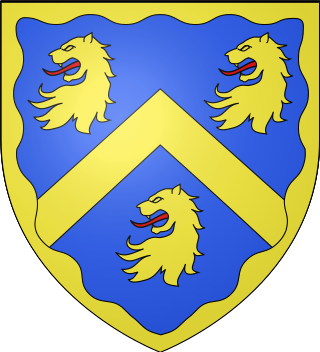
Baron Leconfield, of Leconfield in the East Riding of the County of York, is a title in the Peerage of the United Kingdom. It was created in 1859 for Col. George Wyndham (1787–1869). He was the eldest illegitimate son and adopted heir of George Wyndham, 3rd Earl of Egremont (1751–1837), from whom he inherited Petworth House in Sussex, Egremont Castle and Cockermouth Castle in Cumbria and Leconfield Castle in Yorkshire, all formerly lands of Josceline Percy, 11th Earl of Northumberland (1644–1670), inherited by Charles Seymour, 6th Duke of Somerset (1662–1748), on his marriage to the Percy heiress Elizabeth Percy (1667–1722) and inherited as one of the co-heirs of his son Algernon Seymour, 7th Duke of Somerset, 1st Earl of Egremont (1684–1750), by the latter's nephew Sir Charles Wyndham, 4th Baronet (1710–1763), of Orchard Wyndham in Somerset, who inherited by special remainder the earldom of Egremont. The 1st Baron's eldest son, the second Baron, represented West Sussex in the House of Commons as a Conservative. He was succeeded by his eldest son, the third Baron, who served as Lord Lieutenant of Sussex from 1917 to 1949. The latter's nephew, the sixth Baron, served as Private Secretary to Prime Minister Harold Macmillan from 1957 to 1963. In 1963, four years before he succeeded his father in the barony of Leconfield, the Egremont title held by his ancestors was revived when he was raised to the peerage as Baron Egremont, of Petworth in the County of Sussex. As of 2017 the titles are held by his son, the seventh Baron. Known as Max Egremont, he is a biographer and novelist.
Earl of Sussex is a title that has been created several times in the Peerages of England, Great Britain, and the United Kingdom. The early Earls of Arundel were often also called Earls of Sussex.
Earl of Clare was a title of British nobility created three times: once each in the peerages of England, Great Britain and Ireland.

Earl Cowper was a title in the Peerage of Great Britain. It was created in 1718 by George I for William Cowper, 1st Baron Cowper, his first Lord Chancellor, with remainder in default of male issue of his own to his younger brother, Spencer Cowper. Cowper had already been created Baron Cowper of Wingham in the County of Kent, in the Peerage of England on 14 December 1706, with normal remainder to the heirs male of his body, and was made Viscount Fordwich, in the County of Kent, at the same time as he was given the earldom, also Peerage of Great Britain and with similar remainder. He was the great-grandson of William Cowper, who was created a Baronet, of Ratling Court in the County of Kent, in the Baronetage of England on 4 March 1642. The latter was succeeded by his grandson, the second Baronet. He represented Hertford in Parliament. He was succeeded by his eldest son, the aforementioned William Cowper, the third Baronet, who was elevated to the peerage as Baron Cowper in 1706 and made Earl Cowper in 1718. In 1706 Lord Cowper married as his second wife Mary Clavering, daughter of John Clavering, of Chopwell, County Durham.

Earl of Norwich was a title that was created four times in British history, three times in the Peerage of England and once in the Peerage of Great Britain. The first creation came in the Peerage of England in 1626 in favour of the courtier and politician Edward Denny, 1st Baron Denny. He had already been created Baron Denny, of Waltham in the County of Essex, in 1604, also in the Peerage of England. Lord Norwich was the grandson of Sir Anthony Denny, confidant of Henry VIII, and the nephew of Sir Edward Denny. He had no sons and the titles became extinct on his death in 1630.
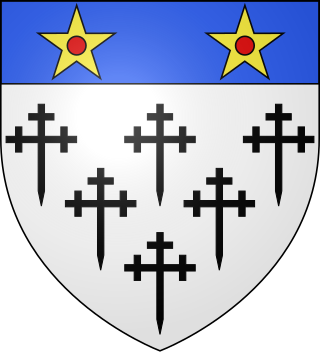
Edward Horace Fiennes-Clinton, 18th Earl of Lincoln was an aristocratic Australian engineer, who succeeded to his family's earldom of Lincoln by primogeniture upon the death in 1988 of his 10th cousin, the last Duke of Newcastle.
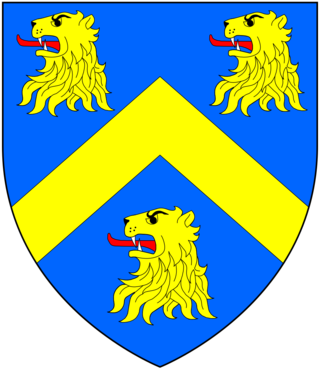
Earl of Egremont was a title in the Peerage of Great Britain. It was created in 1749, along with the subsidiary title Baron of Cockermouth, in Cumberland, for Algernon Seymour, 7th Duke of Somerset, with remainder to his nephews Sir Charles Wyndham, 4th Baronet, of Orchard Wyndham, and Percy Wyndham-O'Brien. The Duke had previously inherited the Percy estates, including the lands of Egremont in Cumberland, from his mother Lady Elizabeth Percy, daughter and heiress of Joceline Percy, 11th Earl of Northumberland. In 1750 Sir Charles Wyndham succeeded according to the special remainder as second Earl of Egremont on the death of his uncle. His younger brother Percy Wyndham-O'Brien was created Earl of Thomond in 1756.

Thomas Pelham, 1st Baron Pelham of Laughton Bt was a moderate English Whig politician and Member of Parliament for several constituencies. He is best remembered as the father of two British prime ministers who, between them, served for 18 years as first minister.
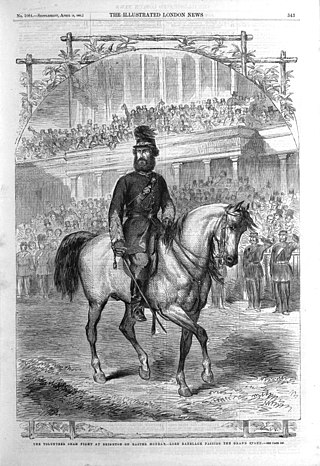
Viscount Ranelagh was a title in the Peerage of Ireland. It was created on 25 August 1628 for Sir Roger Jones, son of Thomas Jones, Archbishop of Dublin and Lord Chancellor of Ireland. He was made Baron Jones of Navan, in the County of Meath, at the same time also in the Peerage of Ireland. Thomas Jones's father was Henry Jones, of Middleton in Lancashire. The first Viscount was succeeded by his eldest son, Arthur, the second Viscount, who represented Weobly in the English Parliament. Arthur was succeeded by his son, Richard, the third Viscount, who was created Earl of Ranelagh in the Peerage of Ireland in 1677. On Richard's death in 1712 the earldom became extinct while the barony and viscountcy became dormant.
Thomas Pelham, 1st Earl of Chichester PC, known as the Lord Pelham of Stanmer from 1768 to 1801, was a British Whig politician.
Francis Leigh, 1st Earl of Chichester was a Royalist politician and courtier around the period of the English Civil War.
Thomas Pelham may refer to:

Earl of Arran is a title in the Peerage of Ireland. It is not to be confused with the title Earl of Arran in the Peerage of Scotland. The two titles refer to different places: the Aran Islands in Ireland, and the Isle of Arran in Scotland. The Irish earldom is held by the Gore family. The Scottish earldom is a separate title, held as a subsidiary title of the Duke of Hamilton.
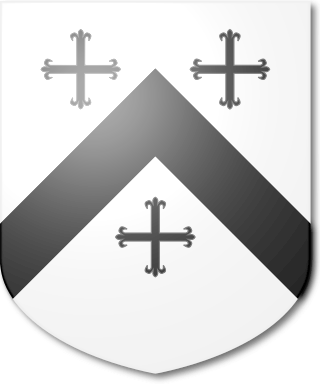
The Anderson Baronetcy, of St Ives in the County of Huntingdon, was created in the Baronetage of England on 3 January 1629 for John Anderson. The title became extinct on his death in 1630.

